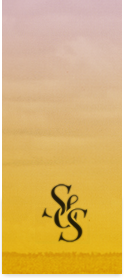
Sailing again; doing anything else was a foreign notion. Even from his perspective—easily pleased within the right company, and nearly colorblind—the dog understood.
He wasn’t able to see the details his master so closely admired—the way emerald leapt from the mountainside, the way cyan bounced off the ship masts, or how gold momentarily engulfed the city, which, as the days came to their close, would sink directly into the horizon, drowning its noise for the night.
True, the dog wasn’t able to recognize that.
To him, it was all heard in chimes and muffled cracks, like bells in the foreground and fireworks in the distance. A symphony of confusion.
To him, it was all seen in grey chaos. A warped mirror held against the dark, brackish water.
This version of that magic was the only kind he knew, and the Baltic Sea approved.
____
Matthew Sage is a veteran abstractionist from Fort Collins, Colorado, who recently shared not one, but two albums with us, and will be here next week.




